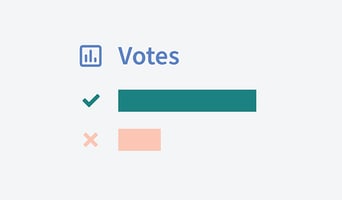Board members have a fiduciary duty to act in the best interests of their constituents. The board must always work as efficiently as possible toward the company’s stated goals, outlined in its charter.
Board self-evaluations help boards get better. They’re more than filling out the same questionnaire every year or so, to fulfill your board’s governance and regulatory duties. They help ensure investors, regulators, and other stakeholders that your board is effectively fulfilling its duties. Periodic self-assessments represent a chance for your board to identify areas where they’re succeeding, and where they’re experiencing stagnation. They’re an opportunity for the board to be more productive. Self-assessments encourage board members to evaluate their individual contributions to the board’s success, as well as to consider how the board functions together.
Why Conduct Annual Board Self-Assessments?
The actions of the board of directors—including decisions about overall strategy, organizational structure, and hiring the CEO—have a substantial impact on the success of the company, so it’s in everyone’s best interests to ensure they’re working as efficiently as possible. Regular self-assessments (usually every one to three years) hold the board accountable to its stakeholders. They ensure that the members of the board know exactly what’s expected of them and that they’re demonstrating best practices for good governance.
- Increase Efficiency. Board assessments identify how the board is succeeding, and where it needs improvement.
- Promote Accountability. A successful board evaluation will show to boards overall effectiveness, in addition to the contributions of its individual members and the C-Suite.
- Lead By Example. Companies with robust board assessment processes set the example to employees, investors, management, and more. When the board holds itself to a high standard, excellence, accountability, and high-performance become ingrained in the company culture.
- Outline Goals. Clear objectives and understanding each board members’ responsibilities toward achieving those goals helps boards consistently work toward meeting those goals.
- Promote Transparency. Fostering an environment of transparency is vital to creating trust. And it helps keep all the stakeholders on the same page about the direction the board is taking.
- Build Relationships. Board assessments encourage members to be straightforward about concerns or challenges they’re having—an open dialogue that’s invaluable in relationship building.
- Encourage Diversity. Increasing gender, racial, and ethnic diversity leads to better board performance. Different perspectives and life experiences mean diversity of thought, ideas, and strategy, for a better and more informed decision-making process.
- Set Direction. Board assessments help align the board with the C-suite and the shareholders. The company as a whole will function more effectively if everyone is working toward the same goals.
- Clarify Leadership. Board assessments can help keep everyone on the same page regarding what’s expected of each role. For the C-suite, management, and the board of directors, a yearly reminder the leadership structure can keep everyone clear about what they’re responsible for (and what they’re not).
- Look Ahead. Periodic board assessments help create a rubric for how the board functions at its most productive. This is especially valuable when new board members come in, because the board already knows what works and what doesn’t.
How to Measure a Board’s Effectiveness
There are several ways to execute a proper board evaluation, the most cost-effective and efficient are online. With more and more people working from home, and more and more boards meeting remotely, digital / online board assessments make the process much easier for the board members.
Internally created online assessment questionnaires and surveys are inexpensive, and easy to create and complete. And since it’s internal, it’s easy to keep track of and compare the feedback year-over-year. Challenges include lack of nuance with multiple choice questions, and the fact that the survey was created internally might make members underestimate the importance of their feedback.
There are also several options for digital assessment tools, which provide templates with questions that have proven to be effective at generating replies. They’re easier to track and report on, but they’re more expensive than creating your own survey.
A rigorous and effectively conducted board assessment can significantly influence the board’s performance and foster good governance. It represents the company’s commitment to accountability and transparency, and ensures stakeholders that each of the members of the board is contributing to the company’s success.
Other posts you might be interested in
View All Posts
The Radical Future of Corporate Governance and Blockchain
Read More
Spotlight on Board Cybersecurity
Read More
Best Practices for Board of Directors Voting Procedures in the Digital Era
Read MoreSubscribe to email updates
Get updates delivered directly to your inbox.